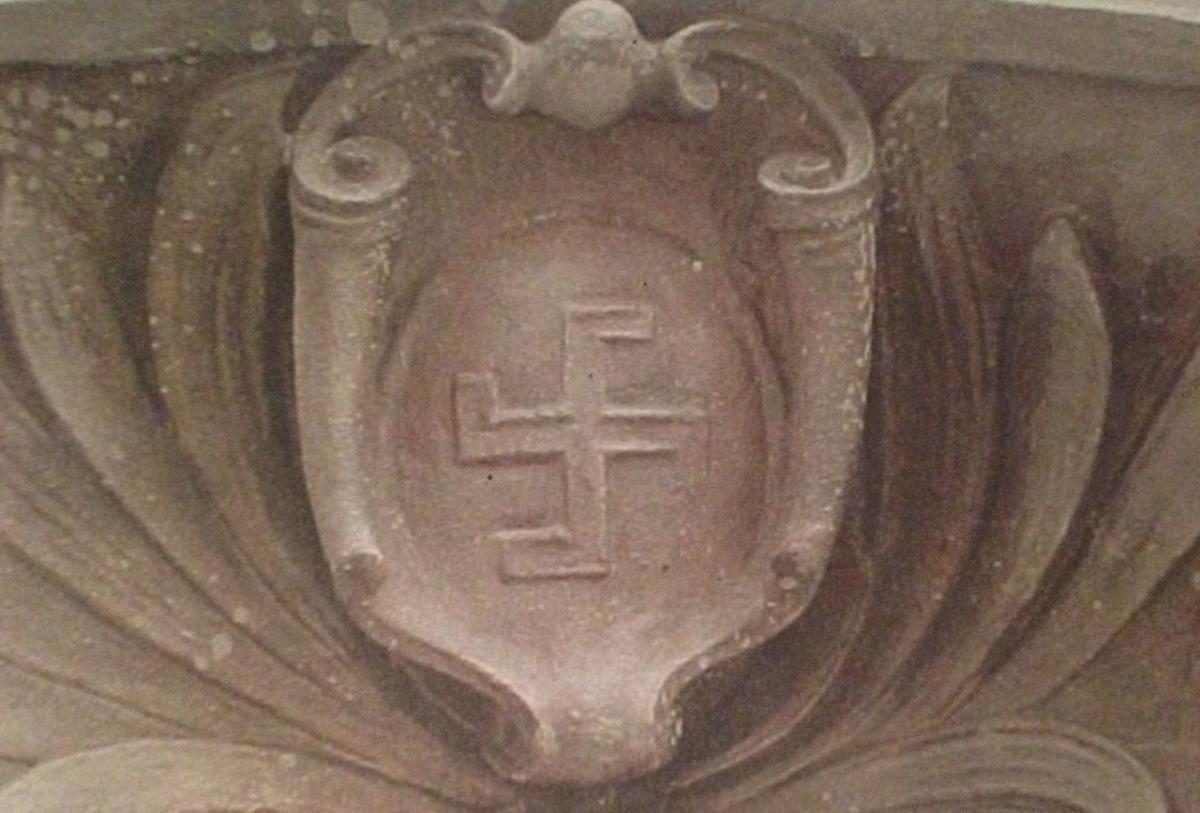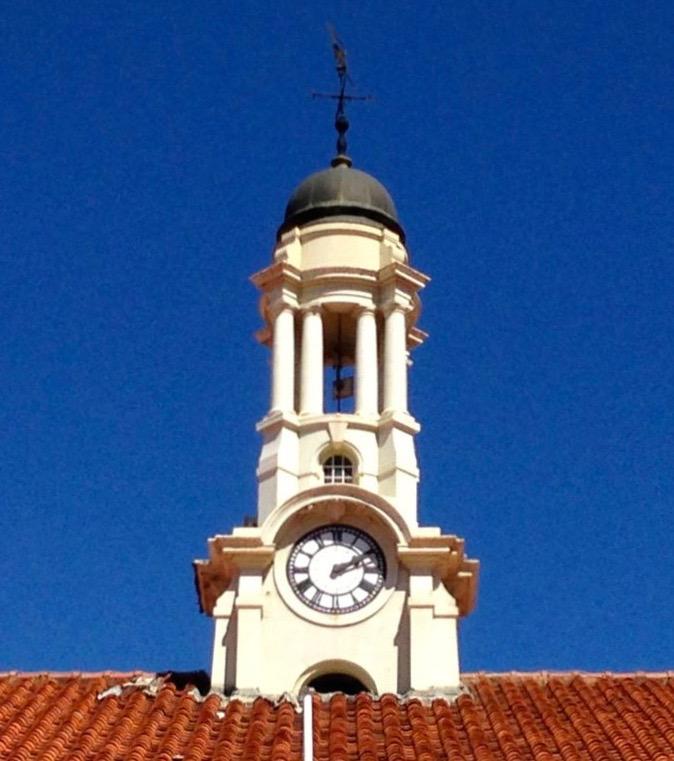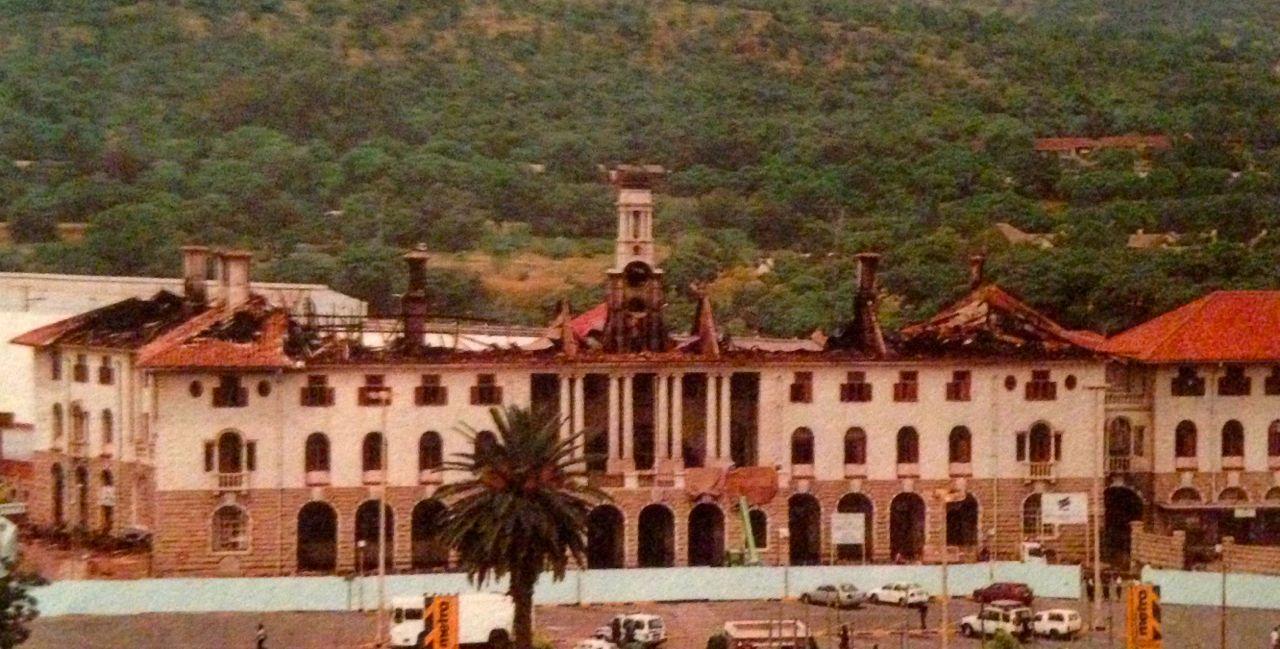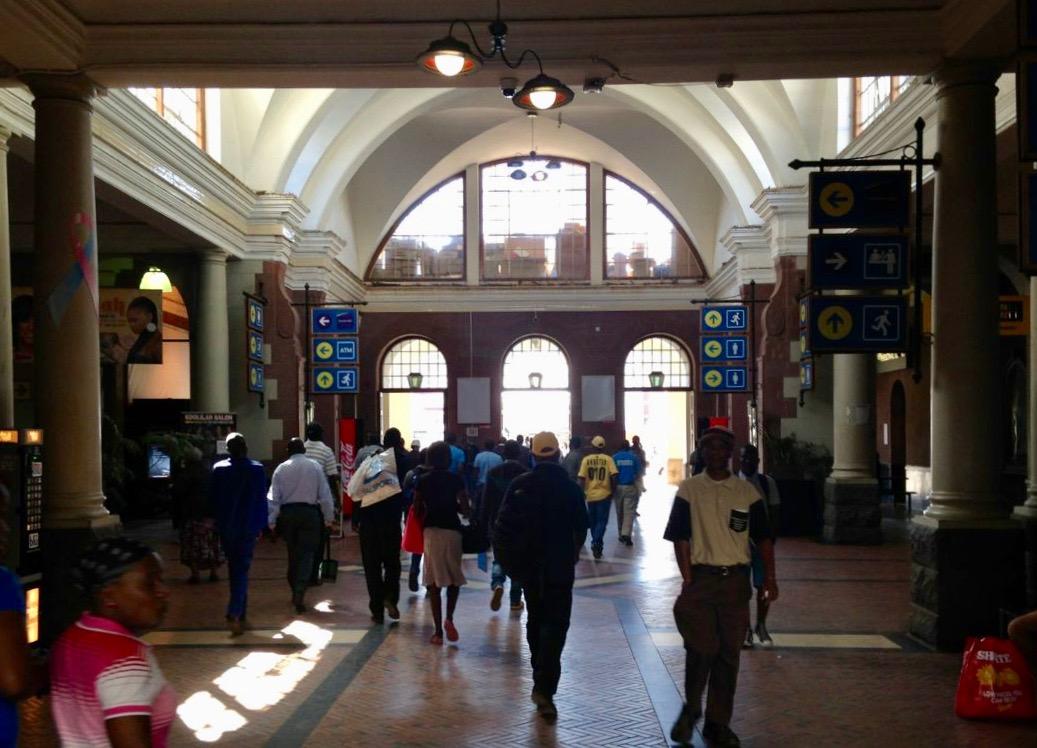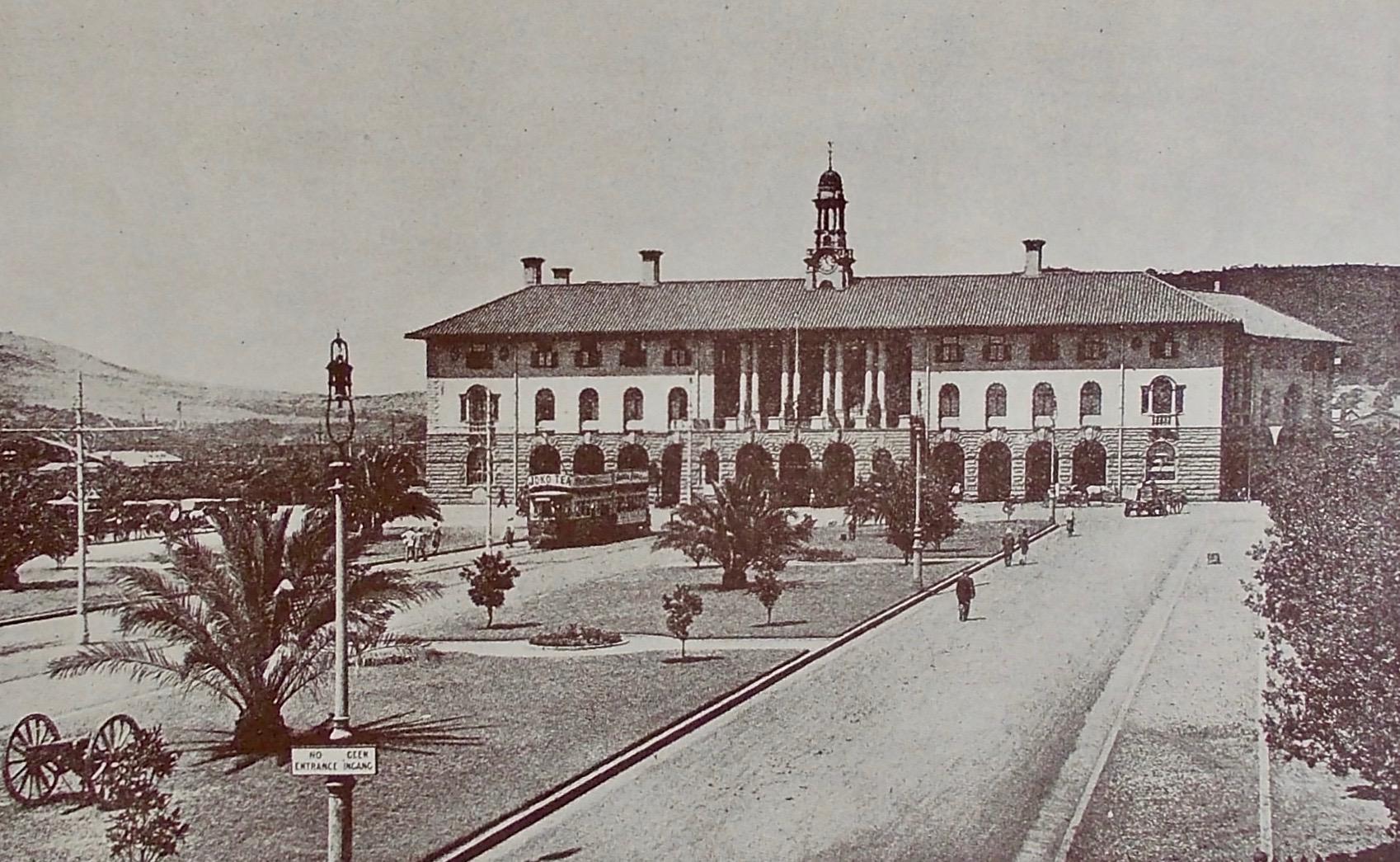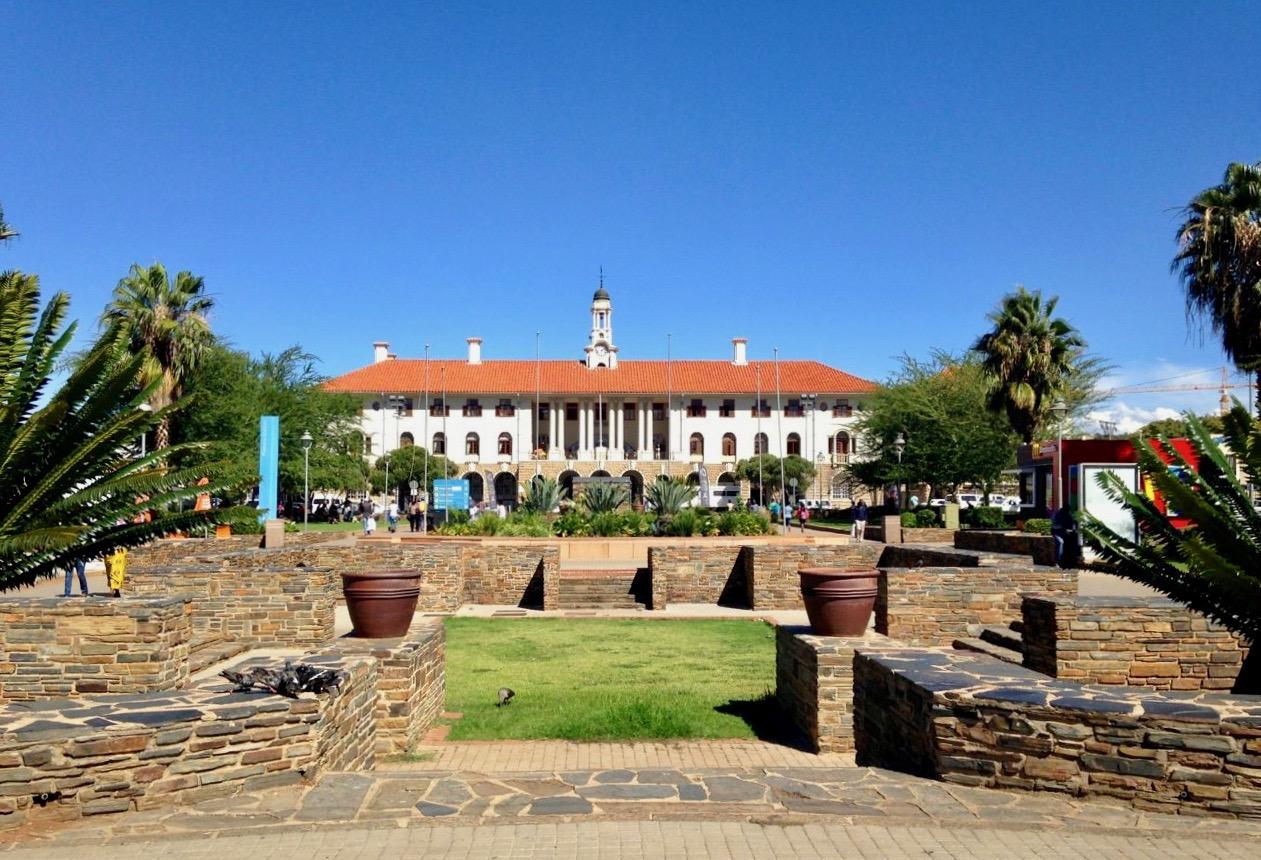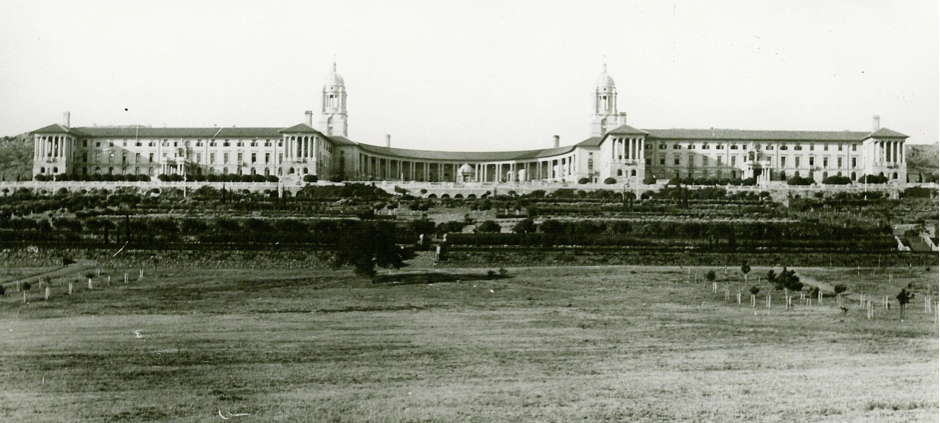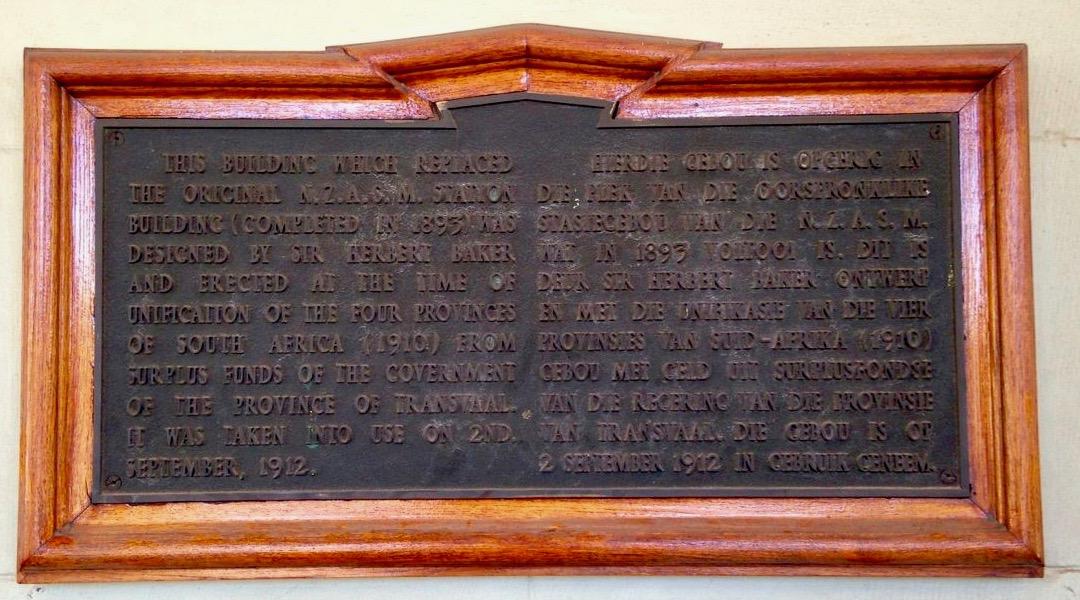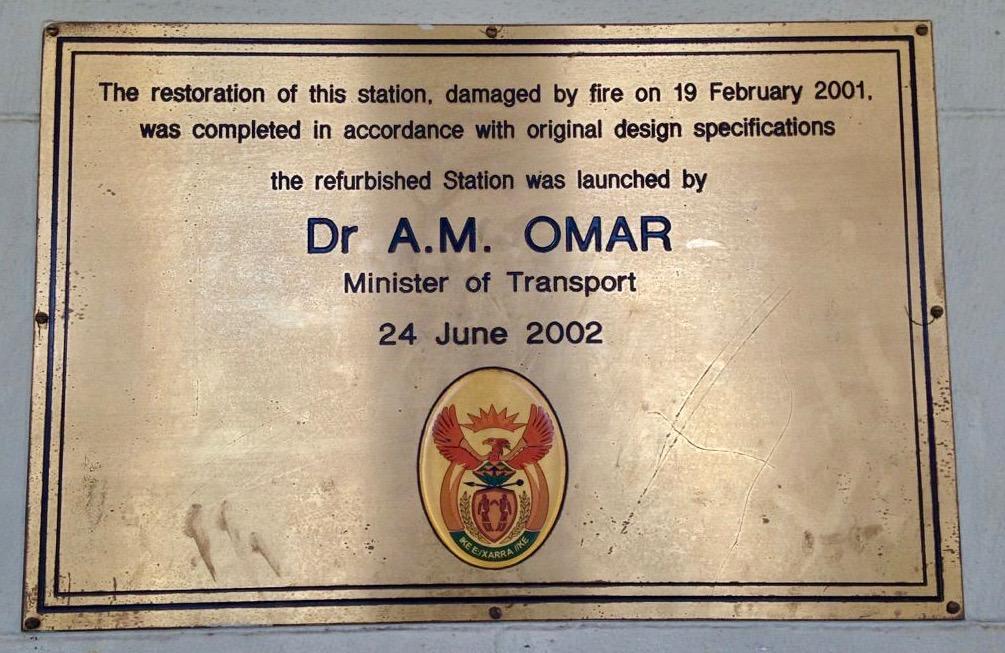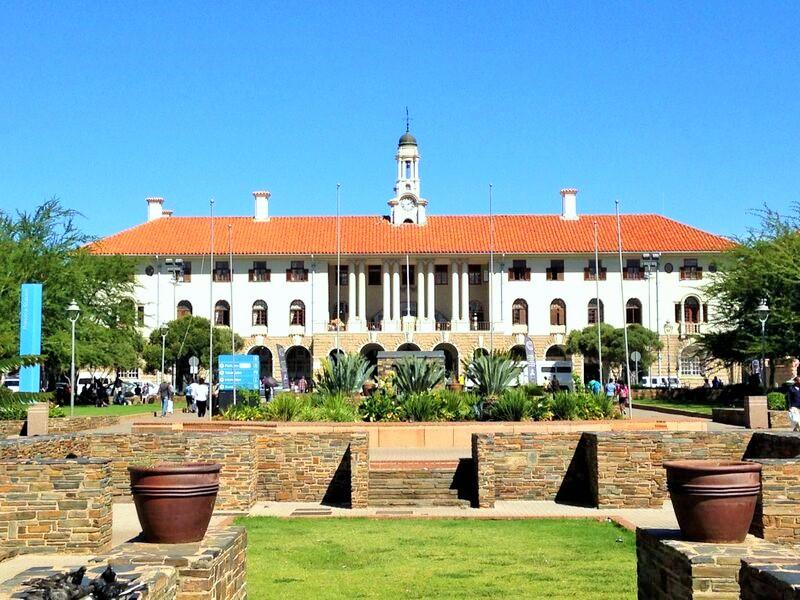
Disclaimer: Any views expressed by individuals and organisations are their own and do not in any way represent the views of The Heritage Portal. If you find any mistakes or historical inaccuracies, please contact the editor.
During the restoration of the Pretoria Railway Station in the early 2000s, a swastika was found in the plasterwork above the clocktower. In the article below, originally published on the Brand South Africa website on 19 March 2002, Lucille Davie unpacks some of the theories behind the Swastika. She also takes an in depth look at the restoration process. Click here to view more of Davie's work.
Renowned British architect Herbert Baker, when designing the Pretoria Station 92 years ago, had a swastika inserted into the plasterwork above the clock in the tower, erected in the centre of the roof of the gracious building.
This building was completed in 1910, but most of us associate the swastika with Nazi Germany in the 1930s and 1940s, so what’s this all about?
There are conflicting views as to how Baker’s swastika – albeit a straight-up swastika instead of a tilted Nazi swastika - ended up above the clock in the building. One view says that Baker was fascinated by symbols, but they appeared more in his writings than in his buildings. Another says that what was originally intended for the building - a tableaux of a man, woman, elderly woman and child – didn't make it to the building, with a suggestion that money or time constraints led to the swastika replacing this symbol. Instead this tableaux ended up on Baker’s Union Buildings in Pretoria instead, completed in 1913.
Still another view says that the four arms of the swastika were chosen to represent the four colonies, as a symbol of unification in the celebrations when South Africa became a union in 1910.
Pretoria Station Swastika
We’ll never know which opinion is correct, but what we do know is that the symbol has been around since 3000 BC, found in images in Europe and Asia. Furthermore, the word swastika is Indian and is a symbol of prosperity and good fortune. It originally represented the revolving sun, fire or life.
It was widely used in Mesopotamian coins, and in early Christian and Byzantium art, as well as South and Central American art. It is also believed to have been used by the Navajo Indians in North America. It is still used today in Buddhism and Hinduism.
Last February the Station burnt down, or at least most of its roof burnt down, including the elegant clock tower. When the restoration process started last June, one of the first jobs was to restore the clock tower and its weathervane, and in the process the swastika was discovered.
The red copper weathervane fell off in 1983 and was never found. It had a charming locomotive on its apex, and at a cost of R10 000, the weathervane and the locomotive now sit again at the very top of the building. The clock face, originally made of cast iron and 1.5 metres in diameter, has now been replaced.
While the workers were up in the sky, the beautiful copper copula was cleaned and polished, for the first time in 92 years.
The restored clocktower (The Heritage Portal)
The fire started last February as an indirect result of a signalling problem down the line from Pretoria. Commuters on the station became more and more impatient, and by 6.30pm, 6 000 commuters had been waiting for their connections for over an hour. It is believed that a small group – 12 have been charged with arson and vandalism – began attacking station property and staff. This group, after throwing bins onto the tracks, stones and fire extinguishers through windows, entered the waiting room and set fire to the curtains, carpets and chairs.
While the crowds managed to leave the area via different exits, the fire quickly spread, moving up through two skylight wells on either side of the waiting room. It reached the roof and spread very quickly along the old eaves, destroying almost 100% of the roof, an area of 1 800 square metres.
It took firemen with 14 fire engines until 4am to put out the fire, and although most of the building was not damaged, the walls and floors were thoroughly drenched.
Pretoria Railway Station after the fire (Intersite Property Management Services)
Contractors appointed
In June contractors were appointed to restore the buildings, through a selection process based on previous work on fire damage, restoration of historical buildings and black empowerment credentials.
“The first step in the restoration process was intensive research of what the building was and is at the moment,” says architect José Ferreira, of RFB Consulting Architects, one of the contractors.
Baker’s initial drawings were found. Over the years the South African Railways had added internal structures and replaced the wooden parquet tiles in the entrance hall with klompie brick tiles. These had to be replaced, but Ferreira says it took quite a bit of research on Baker’s other buildings to establish his preferred patterns and shapes for the replacement tiles.
These replacement quarry tiles are now in place, emulating the patterns of the parquet and completing the splendour of the tall, arched entrance hall.
The magnificent arched entrance hall (The Heritage Portal)
It was hoped that the restoration would be complete by December 2001 but this was delayed by several factors. Plaster on the walls and ceilings had fallen off and the porous bricks had to be given time to dry out. But in October and November Pretoria experienced heavy rains which meant the bricks needed longer to dry out.
But even once the bricks were dry, re-applying the plaster proved difficult. The bricks are old and made from lime mortar, and modern cement plaster is not compatible with them. Experiments were done to establish the correct mix to make the bricks and plaster compatible.
This was not the only problem. Over the years the upper part of the beautiful sandstone façade had been painted a pale sand colour to blend with the lower rough stone colour. Once restoration started, it was suggested that the paint be stripped and the original façade be restored, instead of another coat of paint being applied.
Old photo of the Pretoria Railway Station (South African Builder Magazine)
The investigation revealed that in order to make the paint adhere to the stone, the painters had sealed the sandstone with an industrial sealant. This had subsequently seeped into the stone, causing the sand particles to separate. Furthermore, the sealant was of a non-breathing variety and prevented the natural process of evaporation of water. This water accumulates and over time causes deterioration of the stone, leading to a further separation of the stone particles.
As a result, it was impossible to consider removing the paint and risking further deterioration. It was decided to renew the paint, this time using a breathable system which allows for moisture evaporation.
Reconstruction of roof
The reconstruction of the roof posed special problems, relating to Baker’s original design of the roof. The timber used for the original roof was Baltic deal or Scandinavian pine, and while efforts were made to replace the trusses with this timber, cost and time considerations made this impossible. Instead, local high-quality laminated pine was used.
At the back of the building the roof curves. This meant that almost every truss inside the roof on the curved section had to be individually measured and cut to fit its particular place. Where possible, every effort was made to re-use the original roof timber.
The roof tiles were also a challenge. A mould for them and a specialised cutting machine were imported from Italy, and the tiles had to be purpose-made.
“Baker had skilled craftsmen to do this work, but we have had to study his drawings carefully and brief the builders and manufacturers precisely,” says Ferreira. A brickmaker from Italy was brought in to assist with the details.
Several runs of the rounded red tiles were made before the correct colour was obtained, and now, says Ferreira, when the new tiles are compared with a section of tiles at the back that survived, “no one can tell the difference”.
And now, with completion a mere two weeks away, has the restoration been successful? “Yes, we are very happy with what has been done, it looks stunning,” says Annette Lindeque, acting regional manager at Intersite Northern Gauteng. Intersite is the company that manages and develops all metropolitan railway stations on behalf of owners the South African Rail Commuter Corporation.
“We were shocked and stunned when it happened but it has sparked the restoration process, which was necessary – the fire has provided opportunity,” adds Lindeque.
The restored Pretoria Railway Station (The Heritage Portal)
Surrounding areas
The area opposite the station is also to be revamped. At present it is an attractive garden but will be re-designed, and is to be declared a maximum control area, which means that hawkers will not be allowed use the garden for trading. They are to be moved to another area and supplied with water, and lights and stalls.
The road between the station and the garden is to be closed off and raised to enhance pedestrian safety. Parking will be constructed to the east of the garden, and land and buildings around the station will be developed, some for informal traders.
A budget of R18-million has been carefully used for this restoration and although compromises had at times to be made, “the quality is great”, says Ferreira.
Part of that budget was spent on a fire detention system that links directly to the city’s emergency systems, says Lindeque. The signalling systems down the line are to be upgraded as well.
The Pretoria Station was the first public building Baker designed and built in South Africa - mostly he’d built houses and churches - and is believed to be a try-out for the techniques he used in designing and building the grand and gracious Union Buildings several kilometres from the Station.
Old photo of the Union Buildings via ARRA
When South Africa was on the brink of becoming a union in 1910, it was decided to use excess funds that the Transvaal government had, instead of surrendering them to the new central government. A competition was held to find an architect for the Station.
When none of the entries were approved, the competition was abandoned, and Baker, who was one of the competition judges, was awarded the commission. Baker began his sketches on 17 March 1909 and completed the drawings five months later, on 11 August. The Station replaced the old station which was built to receive the first steam trains into Pretoria, in 1893.
A plaque commemorating the opening of the building (The Heritage Portal)
The Station has some 70 000 passengers pass through its entrances every day, most to catch a train to work, some to take a coach out of town, some to board the luxurious Blue Train to Cape Town, many, it is hoped, to take the controversial R7-billion high-speed Gautrain when it’s completed in 2006. [the Gautrain eventually cost R26-billion, and hit the tracks in 2010]
Commuters will shortly walk on beautiful quarry tiles through brand-new teak doorways, and station workers will open polished teak doors with brass knobs, and enjoy the high arches and shiny, new marble columns. They can enjoy coffee at the new coffee shop or buy a fresh croissant at Butterfields Bakery on the concourse.
Plaque commemorating the restoration of the Pretoria Railway Station (The Heritage Portal)
Lucille Davie has for many years written about Jozi people and places, as well as the city's history and heritage. Take a look at lucilledavie.co.za.
Comments will load below. If for any reason none appear click here for some troubleshooting tips. If you would like to post a comment and need instructions click here.

